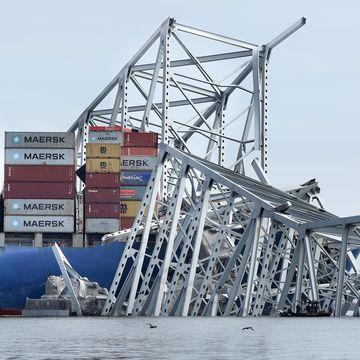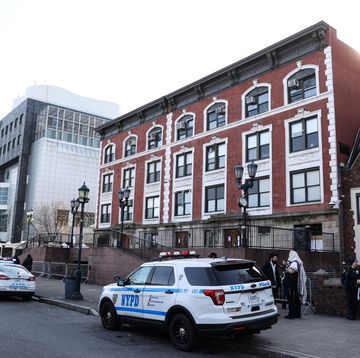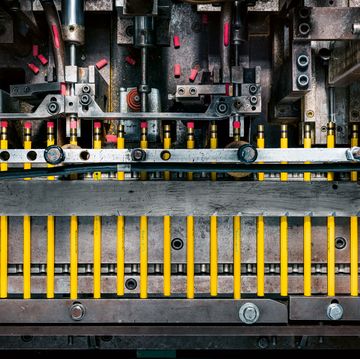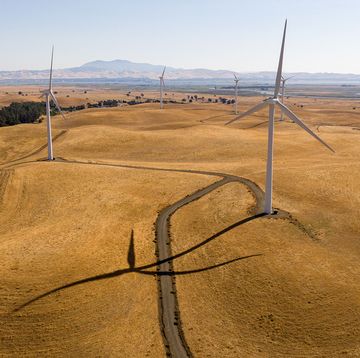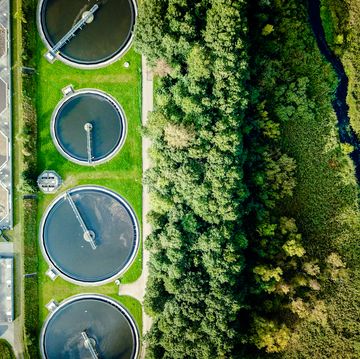- U.S. rail tracks are typically too old to handle the speed of new train technology.
- The limits of the rails can reduce the effectiveness of the train speeds, sometimes by more than 100 mph.
- The issues with the rail run from overly sharp curves to old bridges.
It turns out spending millions—or in some cases, billions—of dollars on upgrading our trains to attain bullet train status in the United States isn’t all we need to do. Our rail system needs an overhaul, too.
It isn’t just that the actual rail gauge is too old (although, that’s not helpful), but a report from E&E News says that the rail in the U.S. will force slower bullet trains thanks to route design, aging infrastructure, and train crowding.
Bullet trains run commonplace around the world—just not in the U.S. They took off in Japan in 1964 and started a takeover in Europe thanks to a push in France in the 1980s, according to CNN. China has 26,000 miles of high-speed rail, but in the U.S., there’s only a measly 375 miles of track that can handle more than 100 miles per hour, which isn’t even close to the 200-plus mph standard of most bullet train lines.
The $102 billion in the 2021-signed infrastructure bill known as the Infrastructure and Investment and Jobs Act meant to bolster our railroads included improved efficiency from the Northeast Corridor to California. In most cases, that doesn’t help with speeds. It will take building entirely new track to give us high-speed status. We can’t just put quick cars on old rail lines.
“A U.S. high-speed rail network is a pipe dream,” Scott Sherin, vice president of Alstom USA, the French-owned rail manufacturer Alstom, tells CNN.
Blame age.
In places such as the 450-mile Northeast Corridor route, the tracks can’t handle any new trains designed for over 200 mph, instead often forced into the 100-mph range. That’s thanks to the track’s design, with curves too sharp for the speed; tunnel and bridge infrastructure too old to take the forces of the speed; and congestion with freight traffic that makes high-speed trains dangerous.
“Until we are serious about high-speed rail in the same way that we were serious about the interstate highways, we’re highly unlikely to see a national high-speed rail system,” Louis Thompson, former director of the Federal Railroad Administration and member of the California High-Speed Rial Peer Review Group, tells E&E News.
The problems abound with age in the Northeast and land issues most everywhere. Whether 150-year-old tunnels forcing slowdowns to as little as 30 mph or sharp curves requiring reduced speed, the heavily traveled Northeast Corridor would need new rail alignment and infrastructure to make an investment of high-speed trains worth it. E&E News reports that only 32 miles of Northeast Corridor track can handle speeds of even 160 mph.
Amtrak has plan to add 100 miles of track capable of hosting bullet trains by 2035. So, even with the addition of 28 high-speed trains purchased in 2016 with $2.45 billion, it won’t be until 2035 that even 30 percent of the route offers up speeds worth talking about.
Just modernizing the Northeast Corridor track to handle current needs—not even the high-speed effort—is an estimated $117 billion. “Most of the money [from the act] goes in fixing stuff,” Thompson tells E&E News, “which is really not high-speed related.”
Then comes the roadblocks when dealing with building new track, as seen prominently in California. The California High Speed Rail (CHSR) project, designed to run 171 miles from Merced to Bakersfield while connecting to existing rail, could offer up a total of 350 miles of rail between Los Angeles and San Francisco.
But the $100-plus billion project to build the 171-mile CHSR has been planned since 1996 and hit all sorts of route squabbles, land acquisition hurdles, and management delays. Getting it done, CNN reports, would equate to 4,200 miles of new highway lanes, 91 additional airport gates, and two new airport runways.
With all the issues, money is always the biggest. Even the California project isn’t fully funded. The United States can’t keep its existing rail line serviceable, so there’s no telling how it will pay for upgrades needed to invite high-speed rail on old rail that can’t handle increased speeds.
Tim Newcomb is a journalist based in the Pacific Northwest. He covers stadiums, sneakers, gear, infrastructure, and more for a variety of publications, including Popular Mechanics. His favorite interviews have included sit-downs with Roger Federer in Switzerland, Kobe Bryant in Los Angeles, and Tinker Hatfield in Portland.




